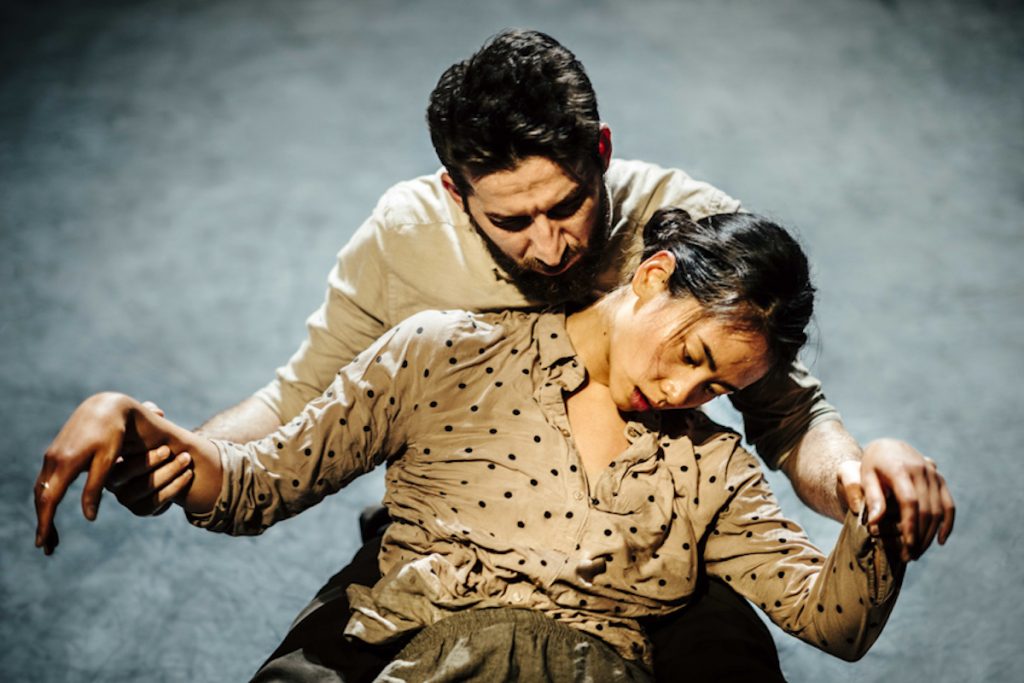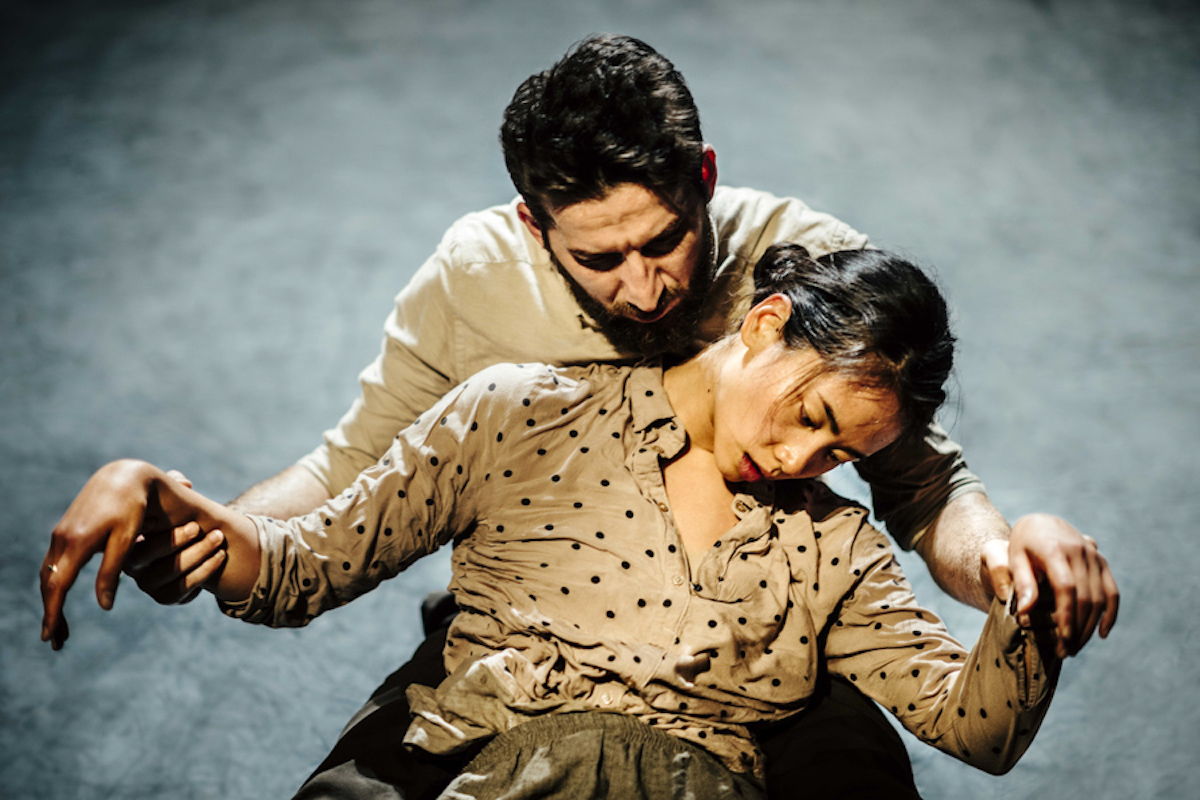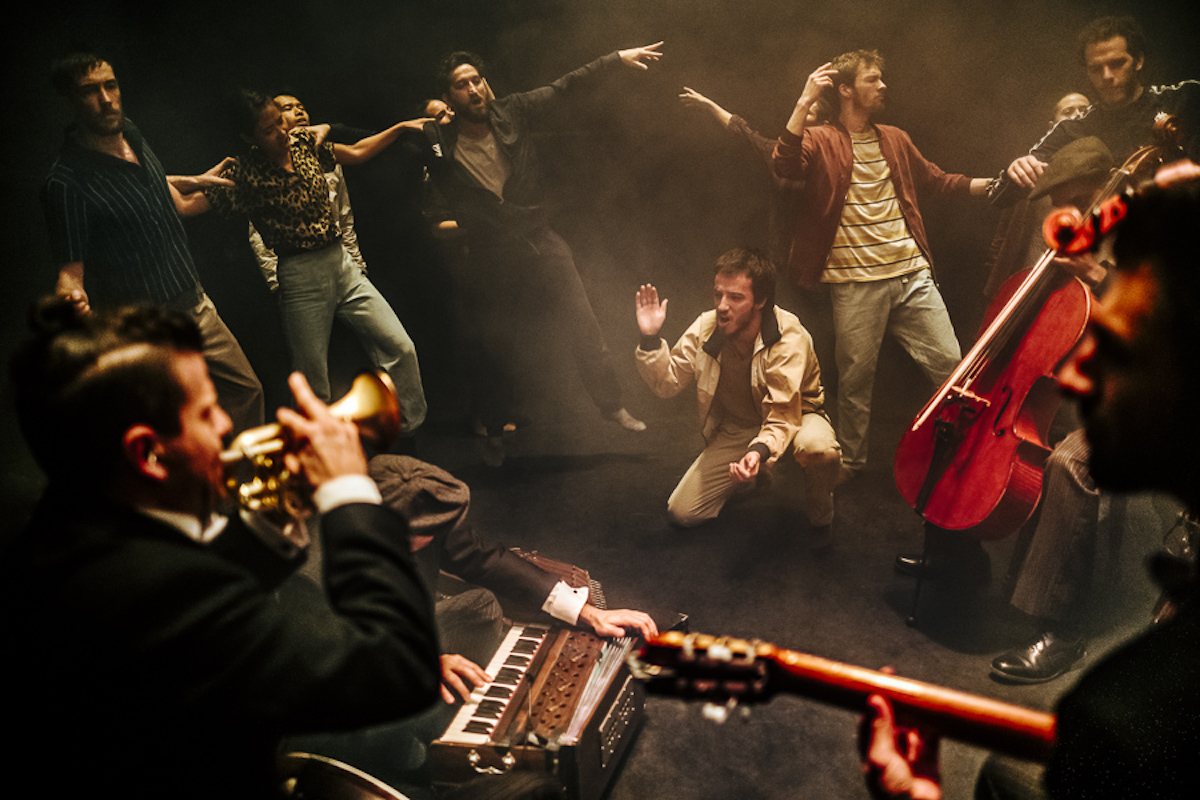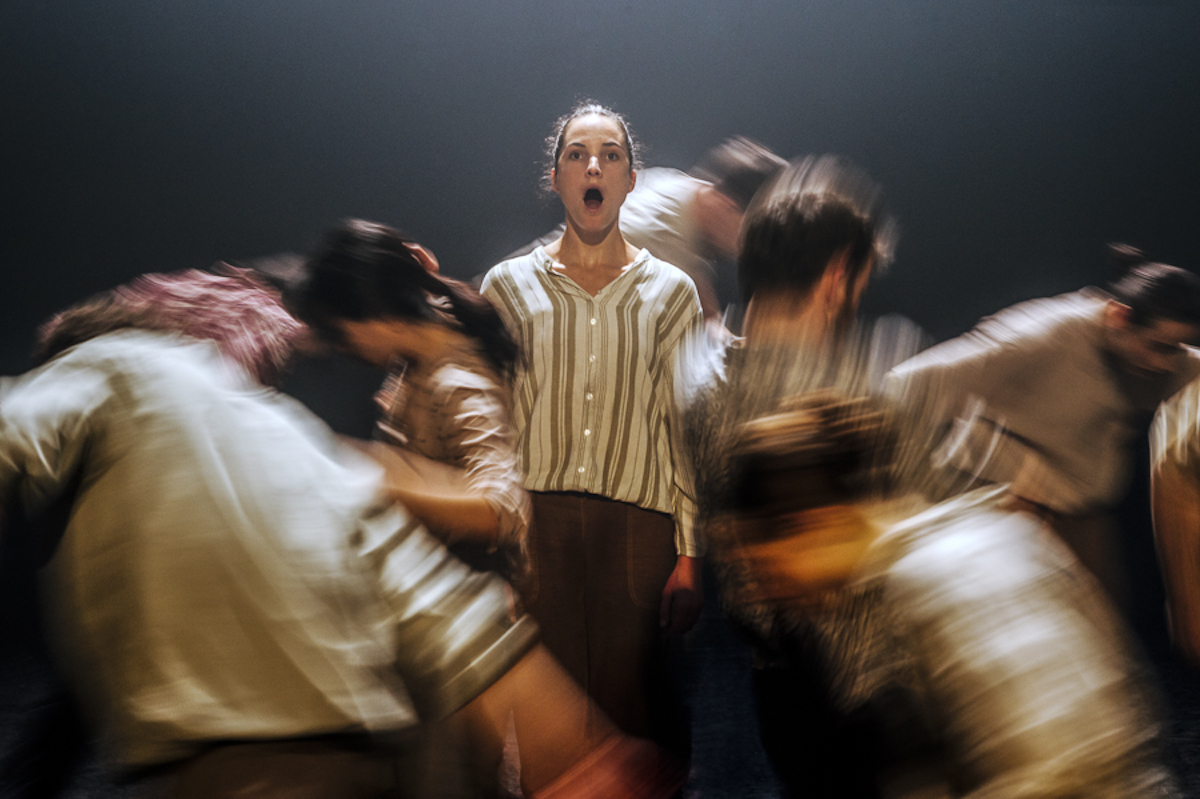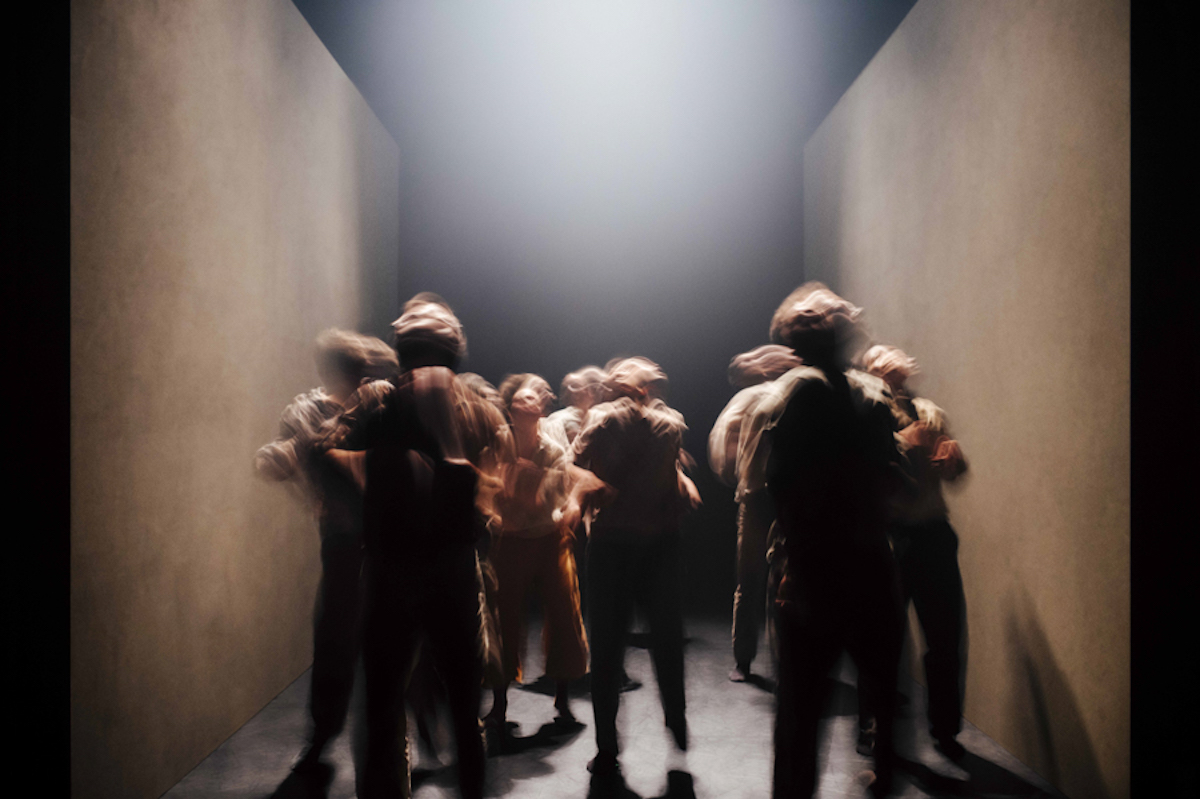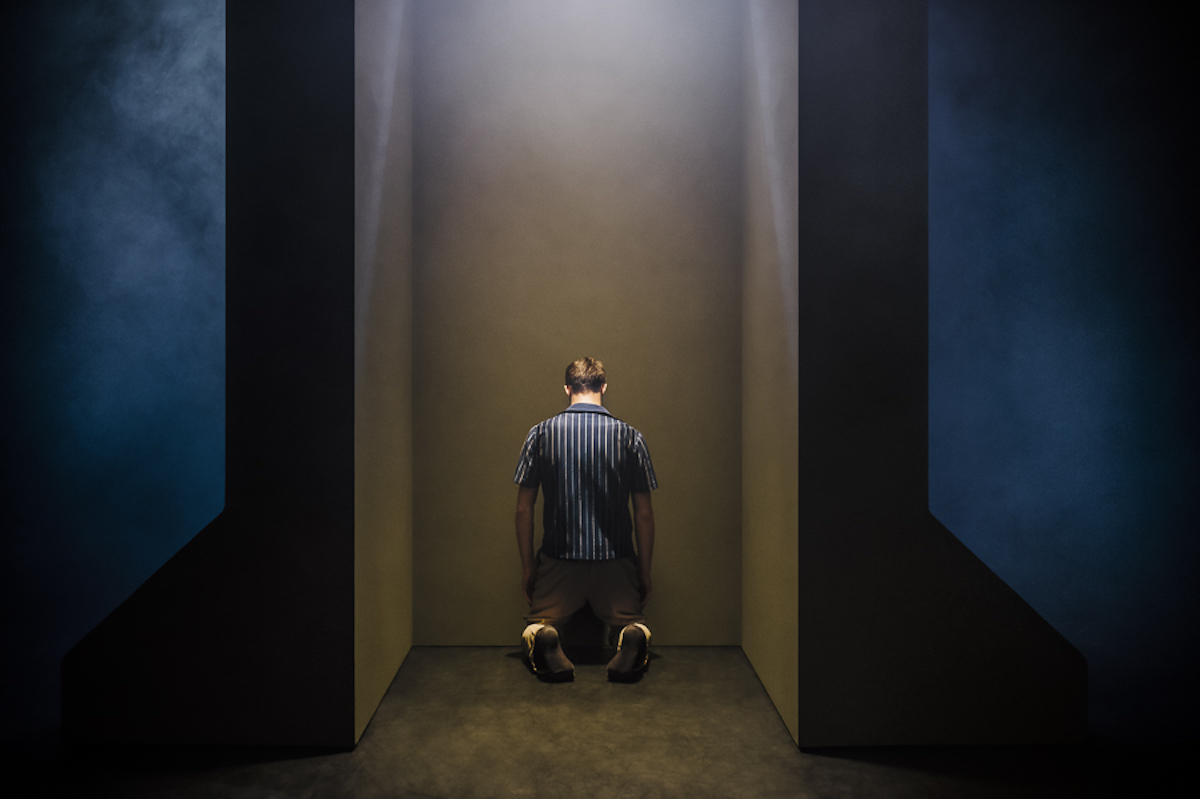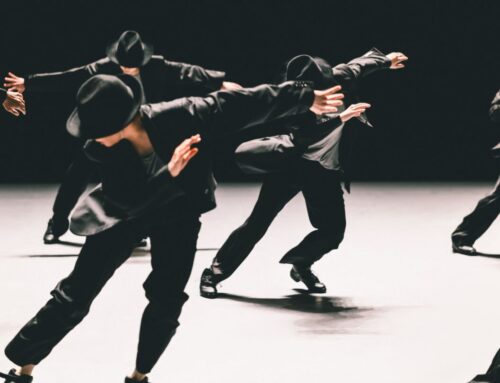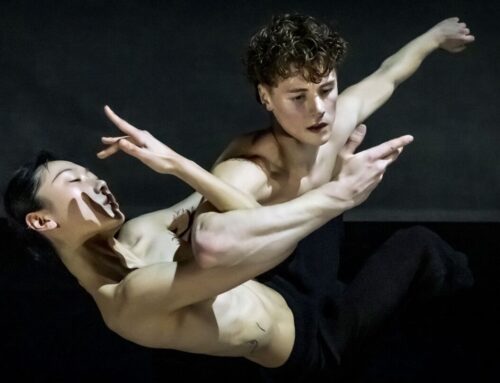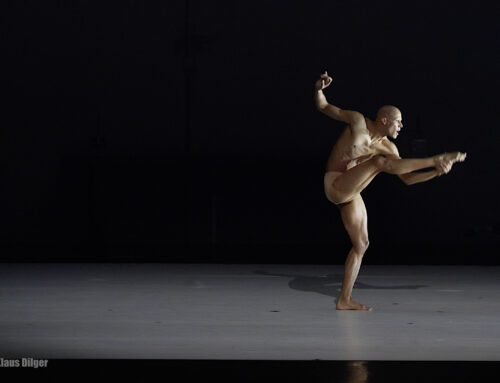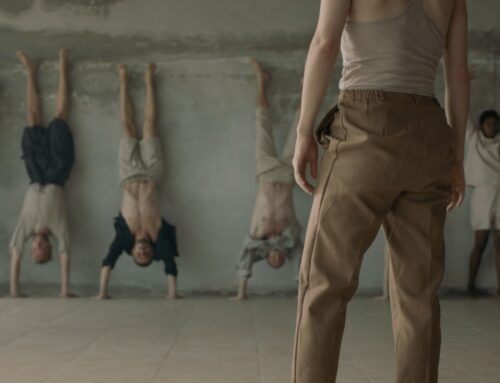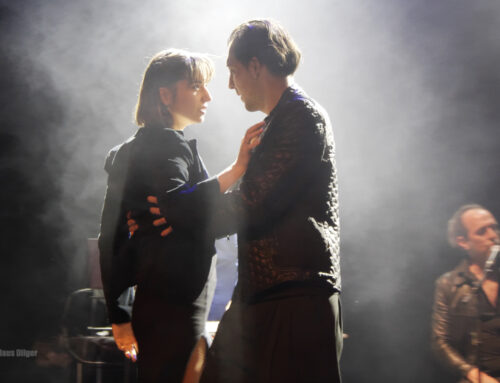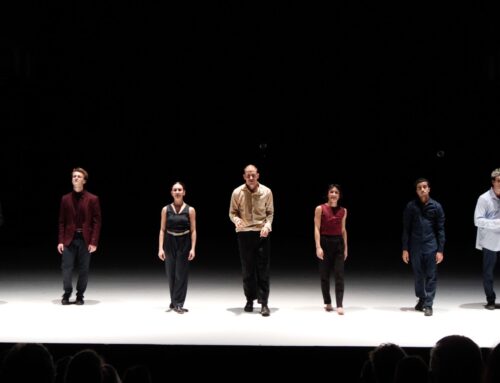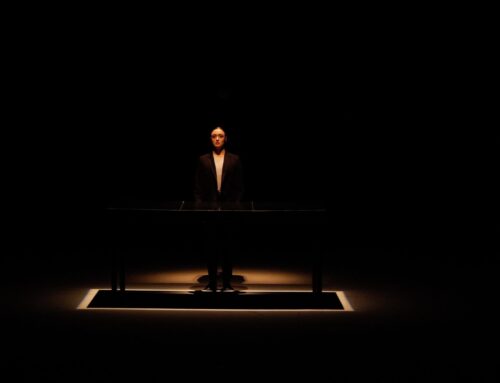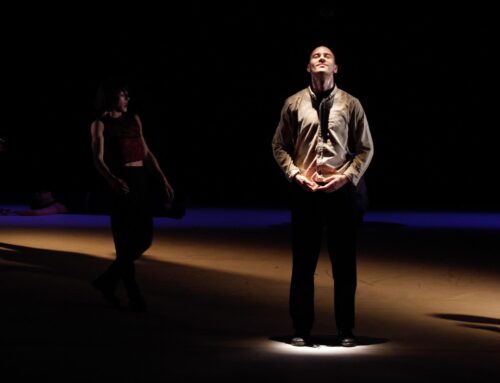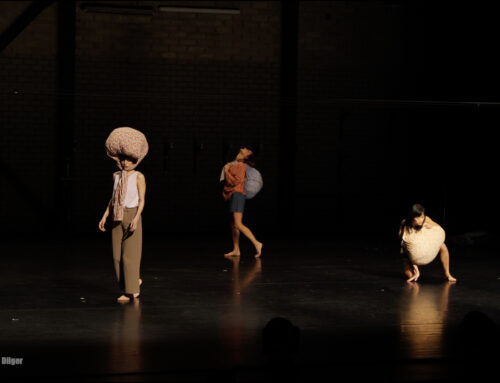The Israeli choreographer Hofesh Shechter presents his “Grand Finale” in Heerlen at festival Schrittmacher.
By Nicole Strecker
translated by Karoline Strys
A dance piece like an alarm siren. Volume, energy and frequency are rising menacingly and non-stop. Palpitation. Panic. Then the excess eases slowly. Exhaling. Relaxing – at least for a moment. The history as a process in cycles. Against one’s better knowledge human cultures repeatedly keep on running into wars, conflicts and catastrophes. Time and time again humankind would choose violence as the solution of pressing issues,- sometimes until self-destruction. And apparently the most talented ‘choreography-Kassandra’ of our present times, Hofesh Shechter, born in Israel and based in Great Britain, foresees presently a phase of rising conflict escalation. Humankind is gathering for the dance of death.
A black monolith towers on stage like a monumental tombstone. Fog drifts appropriately spooky over Shechter’s graveyard. A single spotlight embraces a lonesome human like a divine ray of light. He is kneeling in front of the stone in deep devotion when suddenly he slumps down. Well, that’s it. Prayer and commemoration won’t help the last human anymore. Death rules the world’s stage.

Death belongs to dance like music does. Ever since, people rebelled via dance against bad charms and ever since, choreography has been a practice of exorcism. Shechter manages to present an exceptionally powerful and always subtly political dance requiem of the civilization. And that although he never imitates concrete images like war or catastrophes. Over and over moments come flashing that inevitably evoke associations of known media icons. There is an Asian dancer standing with his mouth wide open – and for an instant for some spectators the famous photo of the children running away from the napalm attack during the Vietnam War pops up. A militant-aggressive mob marches up to defensive walls – and of course, as you know: the choreographer is from Israel, the land with probably the most disputed wall. Shechter turns a yoga meditation group into a martial arts camp – have not lately Buddhist monks also ruined their reputation as gentle peace-loving religious deputies? And he shows groups of people who sway as if they were on a boat on the high seas – a refugee boat? No, actually it appears as if with Shechter the whole civilization was standing on a boat during a storm and was sailing towards its own doom. And just like the famous orchestra on the titanic a live-sextet of cello, violin, guitar, melodica, flutes and percussion provides the sad-tender soundtrack, though electronically accentuated and undermined by massive electro beats so that each spectator can feel his solar plexus vibrate.
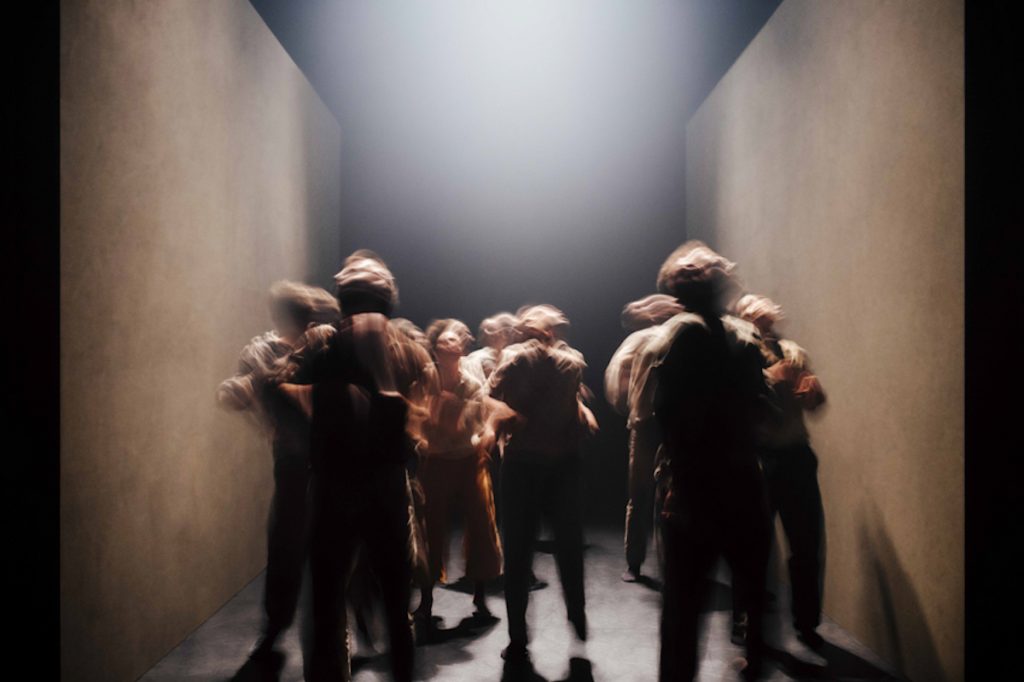
Hofesh Shechter has always been known to be a superb director of aggressive apocalypses combined with a unique movement quality. Always a bit crouched. Always smooth and flexible in the knees. Always unpredictable in the moves and quick in the attacks. This time he interlinks aggression especially striking with softness and elegance – terror and doom can be so beautiful, so sensitive. Here Shechter’s fantastic dancers appear as always everything at the same time: fanatics and damaged, delinquent and victim, heroes and – in particularly memorable – corpses. This is new in Shechter’s choreographic repertory: dealing with the dead body. Those moments when the men first mourn tenderly over the women and then drag them barbarically over the stage are the strongest and most astonishing of the evening; also because Shechter shows how incredibly heavy such a delicate female dancer’s body can be when each muscle relaxes. The dead are a burden to us. Even as a corpse the human still has a resilience that can smother any hope and any will to break out.
That is how Hofesh Shechter comes to the “Grand Finale” and drags the audience into this hopeless battle against the horrible demon that in the end is only then again another human being. But of course a real Shechter does not get away without a grain of cynicism. Just before the break shimmering bubbles rain down from the stage’s heaven. In an endless loop the oratory fiddles the romantic waltz “Lippen schweigen” from Franz Lehárs operetta “The Merry Widow” until also the audience sways to “Hab’ mich lieb”. Then comes the time for a tremendous Shechter-punch against this escapist kitsch. Time for the long overdue realization that we are waltzing on a knife’s edge.
